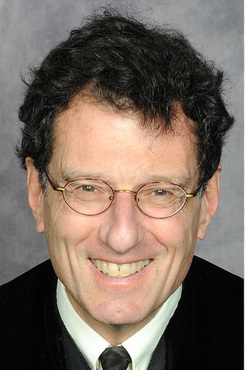Opioid Judge Refuses to Dismiss Claims That Drug Companies Caused 'Man-Made Plague'
In the most substantial ruling to come out of the litigation over opioids, U.S. District Judge Dan Polster adopted most of a magistrate judge's Oct. 5 report and recommendation allowing RICO and public nuisance claims to go forward against opioid companies.
December 20, 2018 at 04:35 PM
5 minute read
 Opioid pills. Photo: Kimberly Boyles/Shutterstock.com
Opioid pills. Photo: Kimberly Boyles/Shutterstock.com
In the most substantial ruling to come out of the litigation over opioids, a federal judge in Ohio has allowed most of the claims to go forward against the manufacturers, distributors and retailers of the prescription painkillers over what he called “a man-made plague.”
U.S. District Judge Dan Polster, in Cleveland, adopted most of a magistrate judge's Oct. 5 report and recommendation. He upheld claims brought under the Racketeer Influenced and Corrupt Organizations Act, but parted with U.S. Magistrate Judge David Ruiz on the only part of his report that sided with defendants — common-law public nuisance — in allowing those claims to go forward.
 Dan Polster, U.S. district judge of the U.S. District Court for the Northern District of Ohio/courtesy photo
Dan Polster, U.S. district judge of the U.S. District Court for the Northern District of Ohio/courtesy photo“It is accurate to describe the opioid epidemic as a man-made plague, 20 years in the making,” he wrote Wednesday in an order. “Plaintiffs have made very serious accusations, alleging that each of the defendant manufacturers, distributors and pharmacies bear part of the responsibility for this plague because of their action and inaction in manufacturing and distributing prescription opioids. Plaintiffs allege that defendants have contributed to the addiction of millions of Americans to these prescription opioids and to the foreseeable result that many of those addicted would turn to street drugs. While these allegations do not fit neatly into the legal theories chosen by plaintiffs, they fit nevertheless.”
The ruling sends “a strong message about the future of the litigation” and a “major step forward” for the more than 1,500 cities, counties, states and other entities with lawsuits in the multidistrict litigation, said the co-lead plaintiffs attorneys Paul Farrell of Greene, Ketchum, Farrell, Bailey & Tweel in Huntington, West Virginia; Paul Hanly of Simmons Hanly Conroy in New York; and Joseph Rice of Motley Rice in Mount Pleasant, South Carolina.
“This is among the largest and most complex civil litigation in U.S. history, and it's moving at an historic rate,” they wrote. “In 2019, we expect opioid manufacturers, distributors and pharmacies will finally be held accountable for the public crisis they wrought when they fraudulently marketed and over-distributed addictive and dangerous opioids.”
Janssen Pharmaceuticals, a unit of New Jersey-based Johnson & Johnson, said in a statement: “We will continue to defend ourselves in this litigation. Our actions in the marketing and promotion of these medicines were appropriate and responsible. The labels for our prescription opioid pain medicines provide information about their risks and benefits, and the allegations made against our company are baseless and unsubstantiated.”
John Parker, a spokesman for the Healthcare Distribution Alliance, which has spoken for the distributor defendants, declined to comment.
Lawyers and representatives for the other defendants did not respond to requests for comment.
Polster's order came in a set of bellwether cases brought by the cities of Akron and Cleveland, and two Ohio counties. Defendants have pending motions to dismiss in several other bellwether lawsuits, including those by various cities and counties in Illinois, Florida, Michigan and West Virginia, as well as the state of Alabama. Native American tribes and hospitals also face motions to dismiss consolidated complaints.
In his 103-page report, Ruiz, the magistrate judge, had found that the case was not “a fishing expedition” and that the defendants, in their dismissal motions, demanded an “untenable level of specificity.” Defendants objected, calling the report a “boundless expansion of tort doctrine” that “kicks the can down the road.”
But Polster's order mirrored Ruiz's conclusions in refusing to dismiss the RICO claims. Defendants had insisted that those claims were derivative of the personal injuries of addicts and, therefore, not “business or property.” They also argued that the plaintiffs lacked standing, citing a 2003 ruling by the U.S. Court of Appeals for the Sixth Circuit called Perry v. American Tobacco, which held that several insurance plan subscribers suing tobacco companies for increased premiums weren't directly injured.
But Polster found that the costs in Perry were “passed on,” while the plaintiffs in the opioid case had economic injuries that were the “direct result of defendants' creation of an illicit opioid market within their communities,” such as health care and law enforcement expenditures and lost tax revenue.
“Here, plaintiffs' alleged damages are not speculative, but concrete and ascertainable,” he wrote. “In this case, the scope and magnitude of the opioid crisis — the illicit drug market and attendant human suffering — allegedly created by defendants have forced plaintiffs to go far beyond what a governmental entity might ordinarily be expected to pay to enforce the laws or promote the general welfare. Plaintiffs have been forced to expend vast sums of money far exceeding their budgets to attempt to combat the opioid epidemic.”
He also refused to dismiss claims for negligence, civil conspiracy, unjust enrichment and fraudulent concealment.
In his report, Ruiz had concluded that the Ohio Product Liability Act superseded common-law public nuisance claims, which he dismissed, but not statutory public nuisance and negligence claims. That portion of his report prompted an objection from the plaintiffs attorneys.
Polster disagreed with Ruiz on that point, allowing both public nuisance claims to go forward.
In addition to Janssen, the manufacturing defendants included Connecticut's Purdue Pharma; Arizona's Insys Therapeutics; Noramco, based in Delaware; Endo Pharmaceuticals and Allergan, both based in Ireland; Teva Pharmaceutical Industries, in Israel; and Mallinckrodt, in the U.K.
The distributors were California-based McKesson Corp.; AmerisourceBergen Corp. in Pennsylvania; and Cardinal Health in Ohio. And the retailers were CVS, Walgreen Co., Walmart Inc. and Rite Aid.
This content has been archived. It is available through our partners, LexisNexis® and Bloomberg Law.
To view this content, please continue to their sites.
Not a Lexis Subscriber?
Subscribe Now
Not a Bloomberg Law Subscriber?
Subscribe Now
NOT FOR REPRINT
© 2025 ALM Global, LLC, All Rights Reserved. Request academic re-use from www.copyright.com. All other uses, submit a request to [email protected]. For more information visit Asset & Logo Licensing.
You Might Like
View All
Plaintiffs Attorneys Awarded $113K on $1 Judgment in Noise Ordinance Dispute
4 minute read
Trump Administration Faces Legal Challenge Over EO Impacting Federal Workers
3 minute read
US Judge Cannon Blocks DOJ From Releasing Final Report in Trump Documents Probe
3 minute read
The Right Amount?: Federal Judge Weighs $1.8M Attorney Fee Request with Strip Club's $15K Award
Trending Stories
Who Got The Work
J. Brugh Lower of Gibbons has entered an appearance for industrial equipment supplier Devco Corporation in a pending trademark infringement lawsuit. The suit, accusing the defendant of selling knock-off Graco products, was filed Dec. 18 in New Jersey District Court by Rivkin Radler on behalf of Graco Inc. and Graco Minnesota. The case, assigned to U.S. District Judge Zahid N. Quraishi, is 3:24-cv-11294, Graco Inc. et al v. Devco Corporation.
Who Got The Work
Rebecca Maller-Stein and Kent A. Yalowitz of Arnold & Porter Kaye Scholer have entered their appearances for Hanaco Venture Capital and its executives, Lior Prosor and David Frankel, in a pending securities lawsuit. The action, filed on Dec. 24 in New York Southern District Court by Zell, Aron & Co. on behalf of Goldeneye Advisors, accuses the defendants of negligently and fraudulently managing the plaintiff's $1 million investment. The case, assigned to U.S. District Judge Vernon S. Broderick, is 1:24-cv-09918, Goldeneye Advisors, LLC v. Hanaco Venture Capital, Ltd. et al.
Who Got The Work
Attorneys from A&O Shearman has stepped in as defense counsel for Toronto-Dominion Bank and other defendants in a pending securities class action. The suit, filed Dec. 11 in New York Southern District Court by Bleichmar Fonti & Auld, accuses the defendants of concealing the bank's 'pervasive' deficiencies in regards to its compliance with the Bank Secrecy Act and the quality of its anti-money laundering controls. The case, assigned to U.S. District Judge Arun Subramanian, is 1:24-cv-09445, Gonzalez v. The Toronto-Dominion Bank et al.
Who Got The Work
Crown Castle International, a Pennsylvania company providing shared communications infrastructure, has turned to Luke D. Wolf of Gordon Rees Scully Mansukhani to fend off a pending breach-of-contract lawsuit. The court action, filed Nov. 25 in Michigan Eastern District Court by Hooper Hathaway PC on behalf of The Town Residences LLC, accuses Crown Castle of failing to transfer approximately $30,000 in utility payments from T-Mobile in breach of a roof-top lease and assignment agreement. The case, assigned to U.S. District Judge Susan K. Declercq, is 2:24-cv-13131, The Town Residences LLC v. T-Mobile US, Inc. et al.
Who Got The Work
Wilfred P. Coronato and Daniel M. Schwartz of McCarter & English have stepped in as defense counsel to Electrolux Home Products Inc. in a pending product liability lawsuit. The court action, filed Nov. 26 in New York Eastern District Court by Poulos Lopiccolo PC and Nagel Rice LLP on behalf of David Stern, alleges that the defendant's refrigerators’ drawers and shelving repeatedly break and fall apart within months after purchase. The case, assigned to U.S. District Judge Joan M. Azrack, is 2:24-cv-08204, Stern v. Electrolux Home Products, Inc.
Featured Firms
Law Offices of Gary Martin Hays & Associates, P.C.
(470) 294-1674
Law Offices of Mark E. Salomone
(857) 444-6468
Smith & Hassler
(713) 739-1250








